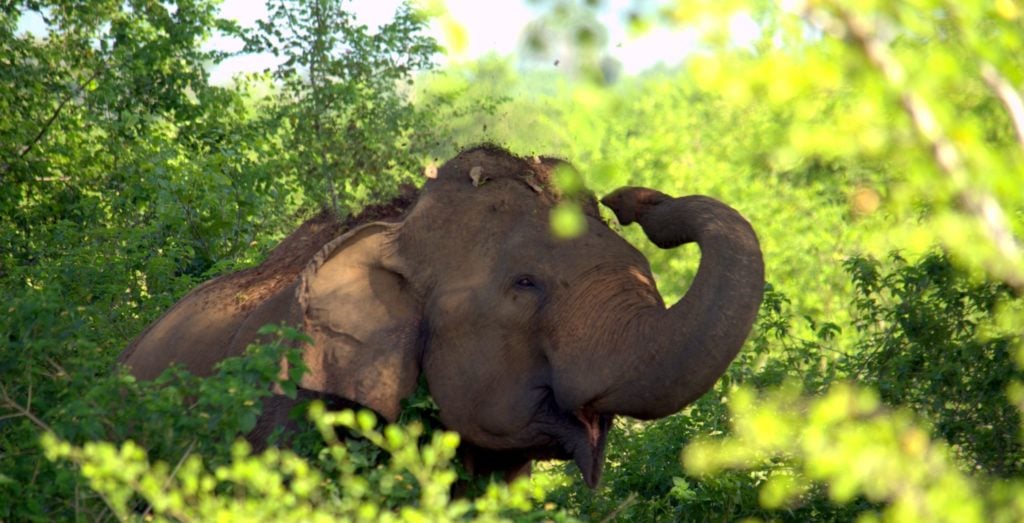- 17 August 2021
Elephants, the Architects of the Wild
Sri Lankan elephants (Elephas maximus maximus), the largest of the Asian elephant sub-species are true ‘ecosystem engineers’ or keystone species, although comparatively smaller than their African counterparts. Keystone species like elephants are those that have a significant impact on the ecosystems they are a part of in comparison to their populations. This essentially means the survival of that biosphere and the species – both flora and fauna – that live within it, depend largely on the keystone species to maintain the equilibrium of which that habitat functions.
Elephants are largely social animals that live within matriarchal societies, and the largest land mammal in Asia that traverse long distances foraging food and water. While doing so, they essentially alter the distinct layers found within forest ecosystems. As the largest herbivores on land, elephants maintain a diet of grass, leaves and sometimes even bark which gives these animals some much needed roughage. But, their role does not end there! Following excretion of these digested materials, elephant dung is a holding cell of seeds which are dispersed as the animal forages. This all-important mechanism of seed dispersal contributes to new life in forests as not only sources of shelter from forest canopies but also food sources for other species as well.

When elephants feed, they create gaps in vegetation. These gaps allow sunlight to filter through to the undergrowth of forest ecosystems while reducing competition, and allowing smaller plants to grow through toward the forest canopy. These gaps, together with smaller trees and grasses that are trampled as elephants move around, create pathways for smaller animals.
Additionally, during the dry seasons, when water is a limited resource, elephants, led by their matriarch will go in search of water. When water isn’t freely found, these intelligent creatures dig with their feet and their trunks until they hit water. The result of this search are wallows which provide respite to other animals during the dry season – many of which may not survive if not for these ‘watering holes’.
Despite their crucial role, these animals are closer to extinction in the wild every day. Currently listed as endangered by the IUCN Red List, human-elephant conflict (HEC) caused by habitat encroachment, continues to threaten their existence. But can we really call it human-elephant ‘conflict’ if the elephant is not in a position of conflict compared to what humans can incur?
Recent studies (Fernando et al., 2019) have estimated that more than 70% of current elephant ranges coincide with human settlements outside of designated Protected Areas (PAs) such as Yala and Uda Walawe National Parks. As development continues and people encroach upon foraging sites, this disrupts elephant corridors, thus exacerbating the ‘conflict’. While segregation and limiting elephants to PAs were the preferred form of reducing HEC, this has proved unsuccessful due to the unfair pressure placed upon rural communities. Until we adapt socio-ecological measures to co-exist, these incredible animals could be lost in our lifetimes and with them, the very ecosystems they support.

At Resplendent Ceylon, we understand our impact on these species and their ecosystems. Being a part of the Dilmah family, our reach goes beyond our ‘backyard’. While our conservation and social impact actions are young and continue to evolve, we take a leaf out of our sister organisations’ book – Dilmah Conservation and the Merrill J. Fernando Charitable Foundation (MJFCF) – to create meaningful change.
Since its inception, 15% of pre-tax profits from Resplendent Ceylon are donated to Dilmah Conservation and the MJFCF. These donations fund some of the most impactful actions in the country, most notably the Elephant Transit Home (ETH) which was established in Uda Walawe in 2011. Marking 10 years since its inception, the ETH and its accompanying Information Centre aims to foster and rehabilitate elephants orphaned due to HEC but also other injuries and congenital defects. The ETH currently houses 52 elephants who are to be rehabilitated and released into the wild – much like baby Ted who was released into the wild in 2020 with his integration being monitored by the team.
Baby Dilmah, currently sponsored by Dilmah is undergoing rehabilitation before she too can be released into her natural habitat. We believe that conservation success depends on effective public-private partnerships such as that between Dilmah and the Department of Wildlife Conservation, and the Centre for Conservation and Research. Research aiding conservation efforts include radio-collaring of two individual elephants which aims to increase knowledge on elephant behaviour such as foraging patterns, while also enabling experts to monitor the reintegration process of elephants at ETH into the wild.

This majestic species appears in our own backyard at Resplendent Ceylon’s Wild Coast Tented Lodge in Yala. As such, we truly live by our ethos of enhancing our biophilic connections. The Lodge, while being situated in the Yala National Park’s buffer zone, is within a much-traversed elephant corridor. Our respect for these animals and their home means that these creatures along with a plethora of other species such as leopards, wild boars and sloth bears, to name a few, are frequent visitors. Basking and drinking from the man-made watering holes fed by treated (desalinated) water from our resort, and feeding on our numerous native florae, we aim to embody co-existence with nature by creating an environment where these animals feel safe to do so.
Written by Sherani Ruberu, Sustainability Manager, Resplendent Ceylon.

Extended Stay Savings
Extend your stay for 6+ nights at Cape Weligama, save more and enjoy the holiday of a lifetime.
















